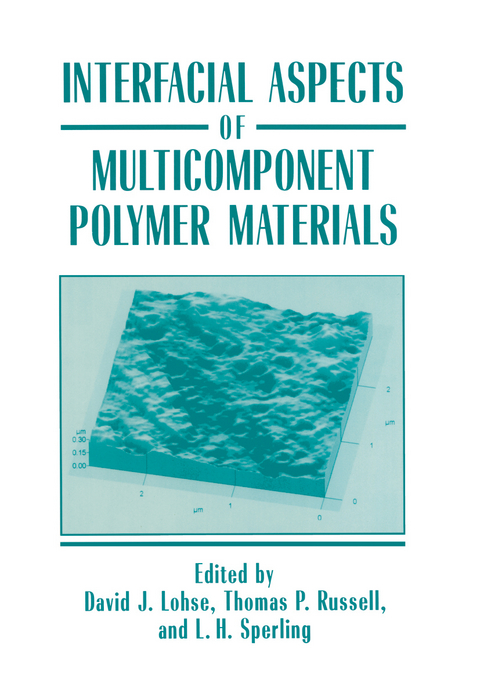
Interfacial Aspects of Multicomponent Polymer Materials
Springer-Verlag New York Inc.
978-1-4419-3284-6 (ISBN)
to Interfacial Aspects of Multicomponent Polymer Materials.- Improved Compatibilization of Immiscible Homopolymer Blends Using Copolymer Mixtures.- Brownian Motion Simulation of Chain Pullout: Modeling Fracture in Polymer Blends.- Polyelectrolytes at Interfaces: Pattern Recognition.- Real-Space Studies on Interface in a Phase-Separated Polymer Blend by Laser Scanning Confocal Microscopy.- Interfacial Characteristics of Amorphous Polystyrene and Binary Polymer Blend Thin Films Based on Scanning Force Microscopy.- Solid State NMR Studies of Polymer Interfaces.- Adsorption and Wetting from Tunable Polyolefin Mixtures.- Strength of the PC-SAN Interface as Determined by Delamination of Polymer Microlayers.- The Formation of Polymer Monolayers: From Adsorption to Surface Initiated Polymerizations.- Changes of Interfacial Adhesion by the Addition of Reactive Polymers.- Pulsed NMR Studies on the Interfacial Structure of the Block Copolymers of Styrene and Isoprene with Variable Interface.- Compatibilization of HDPE/PS Blends by Tapered Diblock PE-PS Copolymers.- Compatibilizer-Phase Morphology-Mechanical Property Relationships of Multicomponent Heterophase Polymer Blends.- Wettabilities and Adhesive-Autohesive Properties of Poly(Tetrafluoroethylene) Surfaces Photografted with Hydrophilic Monomers.- Siloxane Terpolymers as Compatibilizers for Polymer Blends.- Interfacial Strengthening with Random Copolymers.- Molecular Design of Reactive Compatibilizers for Polypropylene—Nitrile Butadiene Rubber Blends.- Transition-Metal Compatibilization of Polymer Blends.- Development of Optical Fiber/Polymer Interface for Immobilized Sensors.- Characterization of Multilayered Automotive Paint Systems Including Depth Profiling and Interface Analysis.
| Erscheint lt. Verlag | 1.12.2010 |
|---|---|
| Zusatzinfo | VIII, 303 p. |
| Verlagsort | New York, NY |
| Sprache | englisch |
| Maße | 178 x 254 mm |
| Themenwelt | Medizin / Pharmazie ► Medizinische Fachgebiete ► Pharmakologie / Pharmakotherapie |
| Medizin / Pharmazie ► Pharmazie | |
| Naturwissenschaften ► Chemie ► Anorganische Chemie | |
| Naturwissenschaften ► Chemie ► Organische Chemie | |
| Naturwissenschaften ► Chemie ► Technische Chemie | |
| Technik ► Maschinenbau | |
| ISBN-10 | 1-4419-3284-4 / 1441932844 |
| ISBN-13 | 978-1-4419-3284-6 / 9781441932846 |
| Zustand | Neuware |
| Informationen gemäß Produktsicherheitsverordnung (GPSR) | |
| Haben Sie eine Frage zum Produkt? |
aus dem Bereich


